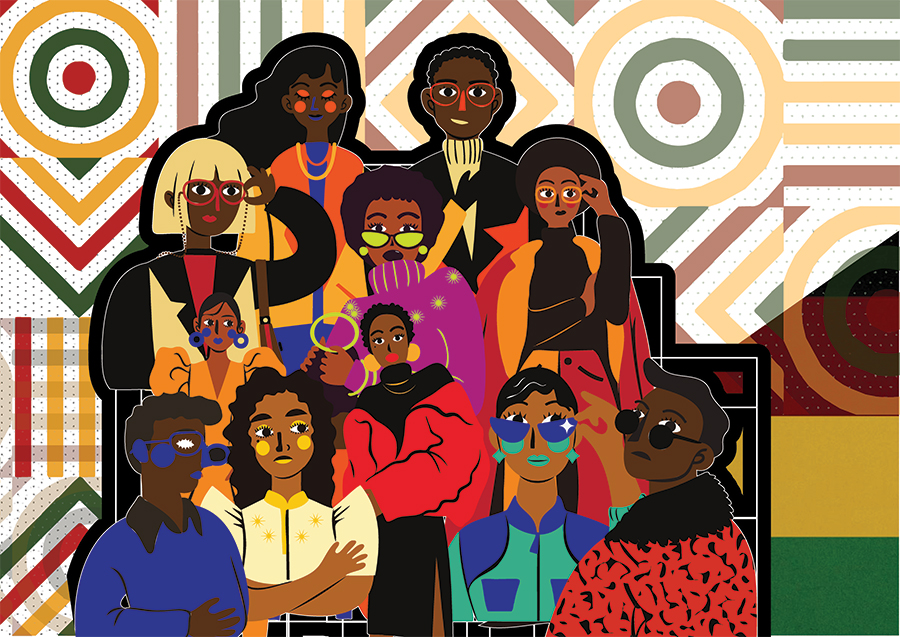Fashion industry is a long ways off from being completely inclusive for minorities on all levels
February was an important month for the recognition of African American history and culture, with Black History Month shining a spotlight on the many contributions of this community to the world. But as we move onwards into the rest of the year, it is important to continue this conversation. As much as the need for diversity and inclusivity in every other sector, so is the need for it in the fashion industry.
In the world of fashion, there is a consistent problem regarding inclusive and diverse representation. Many efforts have been made to address this issue; however, numerous high-end brands still fail to adequately represent people of different ethnicities, body types, and gender identities. This failure can cause consumers to feel excluded by these labels, while professionals within the industry encounter roadblocks when seeking advancement due to insufficient measures taken toward inclusivity. Thus, individuals are calling for more diversity at all levels of business so that equal opportunities may be provided across every rank imaginable.
To promote increased diversity and inclusivity in the fashion industry, businesses must implement specific actions that prioritize a diverse workforce. This means going beyond merely tokenistic representation by actively selecting qualified individuals with different backgrounds for hiring and promotion.
Achieving this objective would necessitate targeted recruitment of women and people of color into leadership roles, while also investing in programs designed to support underrepresented communities on a broader scale. At their core, these initiatives aim at creating inclusive work environments that reflect the true variety present within society today.
It is crucial for brands to work together with professionals and artists of varying backgrounds, equipping them with the necessary resources and avenues that would lead to their success. This entails allocating funds towards educational pursuits, apprenticeship programs aimed at training enthusiastic designers as well as financial backing directed towards communities who lack representation. An endorsement of diverse talents creates a more extensive pool from which brands can hire individuals from; thereby opening new markets while also obtaining an advantageous position within an industry now becoming increasingly multicultural.
Individuals have the capability to make a significant impact in promoting diversity and inclusivity within the fashion industry. By placing importance on companies that prioritize these ideals and demanding action from those who do not, individuals can create change starting at the foundation. This involves keeping corporations responsible for their actions while also refusing to support ones that fail to keep their word. Additionally, it means prioritizing independent businesses and designers dedicated towards fostering diversity and inclusivity.
Nonetheless, attaining a higher degree of heterogeneity and integration in the fashion realm is more than merely showcasing models with various physiques or proportions. The objective should be to form an industry that embodies impartiality and represents all sections equally. This involves taking apart systemic barricades that deprive individuals from communities lacking representation easier access to entering the area of expertise, presenting additional chances for innovative designers who come across as diverse so they can flourish better while providing resources necessary for their development.
An obstacle of great significance is the absence of a varied demographic in important industrial positions. As per research done by Business of Fashion, merely 12.5 per cent major fashion brands are led by females and an even lesser amount run by those from non-white ethnicities. This deficiency at higher tiers within said industry can make for unwelcoming conditions towards diverse abilities and promote bias as well as prejudice on systemic levels. Additionally, this impediment constrains viewpoints and past experiences that inform decision-making which ultimately results in reduced ingenuity and originality.
To surmount this obstacle, it is essential for businesses to give precedence to a diversified hiring practice while filling leadership roles. This means the intentional effort of sourcing individuals from ethnic minorities and women when considering candidates for managerial positions; investing in training programs aimed at cultivating sound leaders within traditionally underrepresented segments, as well developing an organizational culture that places high value on diversity and inclusivity. By doing so, we can create a more equitable industry space where all benefit equally.
The world of fashion has taken strides towards promoting inclusion and variety. However, there is still a long way to go. One way we can make progress is by making diversity a top priority in our hiring practices as well as showcasing diverse talents from designers and creators alike. It’s also important that brands are held accountable for their actions, ensuring they remain committed to moving forward with change rather than being stagnant or regressive. By uniting under these endeavours, we have the power to create an industry that mirrors society’s multitudinous beauty while creating equal opportunities across all aspects of this field – allowing success never seen before!


